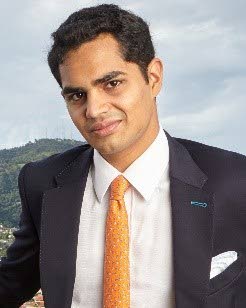State of the art

KIRAN MATHUR MOHAMMED
kmmpub@gmail.com
Beyond the romanticised myth of the starving artist, many of our best artists and performers must hustle for a dime or depend on elusive government grants. Traditional Carnival mas, calypso, Divali, and much of our performance and visual arts (soca excepted) have yet to fully realise their latent commercial potential.
For many artists and creative people, the word "commercial" may seem to cheapen their work. But commercialisation makes the arts self-sustaining.
In Nathaniel Kahn’s recent documentary The Price of Everything, a Sotheby’s auctioneer mentions that great art is "protected" by the market. As reviewer Owen Gleiberman mentions, “If a Rembrandt or a Da Vinci or a Bruegel weren’t regarded as 'priceless,' then it wouldn’t survive through the centuries.”
So what lends art economic value? Art signals social status. And social status is often defined by imitation. People value art that others like. Specific works are also valued relative to contemporary works or to their perceived value by future generations.
Finally, people look for the price history and previous ownership of works: what in the visual arts is grandly known as "provenance."
Art must circulate to accrue value. So how can gallery owners and agents bring more art into circulation?
One thing that makes international brokers like Larry Gagosian and David Zwirner so powerful is their use of data and networks. They know how much particular collectors are prepared to pay, and what works they already possess.
In TT, most art buyers buy for passion. That is part of what lends the local arts scene its authenticity. Once they are bought, though, local works are very rarely lent to be shown publicly.
Recently, Medulla and Y galleries have begun staging more retrospectives and showing work from existing collections. With the collaboration of private collectors, more work can be shown publicly and enter circulation. Each time a work changes hands, the chances are that its value will rise.
The next step is for curators and experts to translate the narratives of different art works and their creators to potential consumers. It is true that most people would roll their eyes at the idea of "expert" validation of our culture. After all, Carnival is partially an expression of democratic protest and community spirit – an all-inclusive event, in fact.
Yet more curation would not detract from that. It would simply provide the validation that would buttress the economic value of the local arts. Crucially – it is a missing link to new international tourism and art markets.
Outside the diaspora, our culture remains largely undiscovered. This is an asset in an environment of international culture vultures looking for the next big thing. Millennials in particular value authentic experiences, as Credit Suisse’s most recent Consumer Trends Report describes. We can tap into the lucrative hipster market.
To do so, cultural institutions as well as private galleries, artists and performers can collaborate more with international partners. The reach of our diaspora and connections makes this easier. We are lucky to have renowned artists like Peter Doig living here. A recent work of his sold for US$28.8 million – almost as much as our entire Carnival budget. Major Lazer member Christopher Leacock (Jillionaire) is from TT. And the founder of modern Chinese dance was TT’s Dai Ailan, a statue of whom is in main hall of the Royal Academy of Dance.
International embassies would be pleased to help facilitate exchanges and commercial partnerships. The relative international success of soca can be replicated.
Potential markets need not be in the first world. Nigeria’s Nollywood is hugely popular throughout Africa, whilst Bollywood films are watched across the Middle East (and here, for that matter). Locally, I have supported the TT Africa Film Festival. Other Caribbean islands already enjoy TT’s culture.
A few have taken the lead. Machel Montano has most impressively connected with the diaspora – selling out Madison Square Garden. Bocas Lit Festival founder Marina Salandy-Brown and TT Film Festival founder Bruce Paddington are both pioneers. Christopher Cozier and Che Lovelace show in Art Basel and in Paris respectively.
We are good at creating content and benefit from heaps of government incentives. All we need is a path to market. In the digital economy, it is easier than ever for creative people to tap into broader markets.
Stendhal Syndrome was first recorded in the Uffizi museum in Florence. A few people would have physically strong reactions to art, much like those transported in the abandon of Carnival. By reaching out to the world, we can share that experience with even more.
Kiran Mathur Mohammed is a social entrepreneur, economist and businessman. He is a former banker, and a graduate of the University of Edinburgh.


Comments
"State of the art"